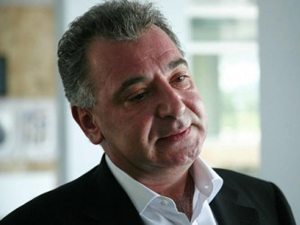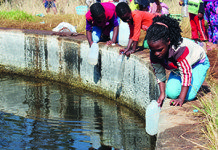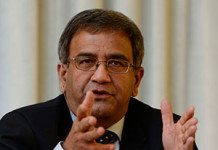
[miningmx.com] – LONDON-headquartered African Minerals (AIM) is focused on mining its iron ore deposit at Tonkolili, Sierra Leone, and its related rail and port infrastructure.
The Tonkolili iron ore deposit was discovered in 2008, and currently has a mine-life in excess of 60 years. It is being developed in a number of staged expansions.
According to the company website, the $1.7bn development of its Phase I is fully funded and is expected to produce 20Mtpa of direct shipping iron ore per annum at full capacity.
The Mining Yearbook asked what is your:
Biggest achievement?
“Our biggest achievement has been taking this from a discovery in 2008 and hitting nameplate production capability in 5 years. It has its own difficulties in construction and development, but even during that time we’ve managed to surpass some of the most established iron ore producers in Africa.
“We believe we are the largest exporter in West Africa and the second largest in Africa after Kumba Iron Ore in South Africa. Kumba is doing just shy of 40 million tonnes in exports, and we are targeting 16-18 million this year, rising to 25mtpa.
The next biggest producer is Societe Nationale Industrielle et Miniere (SNIM) which is the state-owned Mauritanian entity, which exported 13.1 million in 2013.’
Challenges faced?
“The fund-raising required to build a project of this size, construct and refurbish the railway and port was always going to be a major challenge given we needed to raise significantly more than our market cap at the time, but the quality of the orebody and the ability to produce iron ore at about $30 per tonne allowed this to be possible and our investors recognised the unique opportunity.
“Other issues includes building and operating a project of this scale in what was a malaria zone [the malaria prevention zones have been very effective in fact last year, with over a 50% drop in infection rates].’
Future plans?
“Our strategy for the immediate future includes exiting 2014 at the 20mtpa export rate. This will see the completion of phase 1 of the project. Phase 2 is on track to begin in the second half of this year with the construction of the saprolite/friable haematite processing plant.
“We have over a billion tonnes of this product which sits under our DSO resource which we are currently mining. First production of this product will begin in 2016 and this will see production rise further to 25mtpa. Importantly our margins will improve alongside this as the new product commands a higher price in China.’
AIM-listed Zanaga Iron Ore Company is incorporated in the British Virgin Islands, and co-owns the Zanaga Iron Ore Project located in the Republic of Congo with Glencore Xstrata.
According to the company website, the project aims to produce 30mtpa of high grade iron ore (pellet feed) concentrate over a 30 year life of mine, developed in two stages.
Following a feasibility study, the development costs of the project have been reduced to $2.2bn for the Stage One operation, and $2.5bn for the Stage Two expansion. It has recently submitted a mining licence application to the RoC Ministry of Mines.
Biggest achievement?
“I think the shift of scope to staged development has had a very positive effect on the Project. It has substantially reduced the capital cost of the project and lowered development risk whilst maximising capital returns and maintaining bottom quartile operating costs.’
Challenges faced?
“We are looking to finance Stage One through a combination of equity and debt. We have identified a number of attractive opportunities in the debt market, such as debt-backed infrastructure agreements as well as export-credit finance, which could be linked to proposals from EPC contractors with whom we are currently engaging. We will update the market on this process in due course.’
Plans for the future?
“We believe iron ore demand will remain at a level that will require substantial supply replacement, and West Africa will have a role to play in meeting that demand. The recent fall in iron ore prices to around $100/t reinforces the importance of being a low cost producer.
“With a combination of our project opex costs for Stage One of $32/t FOB and a premium quality product, the Zanaga Project is well positioned to compete with Australian and Brazilian operations.’











